1. History
The Hydrographic Office of the Chilean Navy was established on May 1st 1874. Its original mission was to establish a plan for the conduct of hydrographic reconnaissance and prepare instructions for its realization, to direct the publication, printing and distribution of nautical charts as well as the collection of all relevant data, both at sea and on land.
On June 21st 1921, with the experience of 47 years of hydrographic activity, Chile, together with 17 other countries, was a signatory of an Act to establish the International Hydrographic Bureau (IHB). Following a generous invitation from Prince Albert I of Monaco, the headquarters of the IHB was established in the Principality of Monaco.
The objectives of the IHB were to establish a close partnership between national hydrographic services, encourage the adoption of best practice for the conduct of hydrographic surveys and to coordinate hydrographic tasks. The aim being to facilitate safe worldwide navigation by ensuring, as far as possible, a uniformity in hydrographic documents that would allow ships’ navigators to safely use documents prepared by other countries.
Chilean Law N° 16.771 of 1968 and Supreme Decree N° 192 of 1969 established the mission, functions and internal regulations of the current Hydrographic and Oceanographic Service of the Navy (SHOA). The Law states that SHOA “shall constitute the official national, technical and permanent service in all matters relating to hydrography and hydrographic survey….” and its regulations state that one of its functions will be “To constitute the official, technical and permanent representative to the International Hydrographic Bureau”.
Later, the international hydrographic community, represented by the IHB Member States, decided to give a more formal structure to the IHB and agreed to establish, through a Convention, the International Hydrographic Organization (IHO), based in Monaco. Article 2 of this Convention states that “The Organization shall have an advisory and exclusively technical character and its objectives shall be:
(a) To ensure coordination of activities of national hydrographic services;
(b) To promote the greatest possible uniformity in navigation charts and nautical documents;
(c) To promote the adoption of safe and effective methods for the implementation of hydrographic surveys;
(d) To stimulate the development of sciences related to hydrography and techniques in oceanographic studies.
This Convention was ratified on July 31st 1971 by Supreme Decree N°494 of the Government of Chile, thereby reaffirming Chile’s clear intention to contribute fully to the objectives of the IHO. This resulted in the need to strengthen the hydrographic and nautical cartographic capacities of SHOA, to meet the needs of providing safe navigation and protection of the marine environment.
The strengthening of nautical hydrographic and cartographic capabilities requires, in our opinion, at least four vital pillars: technology, infrastructure, financial resources and HUMAN RESOURCES.
2. Women join Hydrographic and Nautical Cartographic activity – the start
Prior to the mid-1960s, hydrographic and nautical cartographic activity was exclusively carried out by men. In 1966, the first group of women joined SHOA and following an internal training program, participated in nautical chart production. In late 1973, a further group of four women, following a skills assessment and specialized training, joined the cartographic team carrying out the delicate work of compiling the information required for the production of the numerous layers that together would constitute nautical charts. It should be noted that, in Chile in those days, no technical institute or university could provide technicians with the necessary knowledge and skills required to work on the production of nautical charts.
An activity associated with cartographic work is the naming of features that need to be included on the nautical chart. The studies and research required were typically entrusted to professional geographers and this activity was mainly developed by women working in the Geographical Names’ Studies Section.
Since 1968, women have also played an important role in aerial photogrammetry. Those with significant experience in cartographic drawing were trained to use the sophisticated stereo plotters and restitution equipment. Together with the relevant aerial photographs, the following tasks could be performed: coastline delineation, photo interpretation of certain geographical features and, ultimately, extraction of all the information that would allow the construction of the cartographic base for the area covered by the nautical chart under production. The final work was known as photogrammetric restitution.
It is also important to note that women have played a significant role in the processing of bathymetric tidal and current data, all of which is required for the preparation of nautical charts.
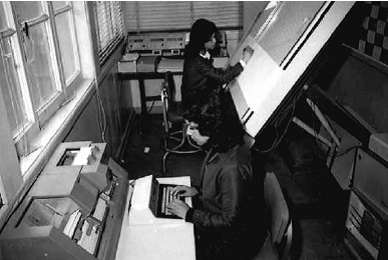
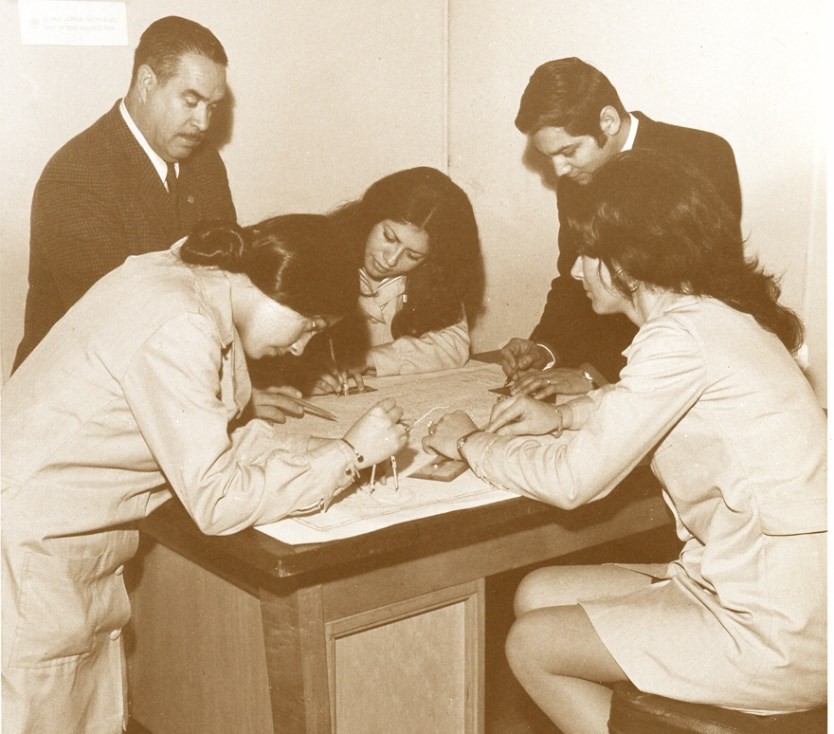
It is notable that those women who joined the “cartographic production line” fulfilled their function with great meticulousness and precision, an activity that is still carried out today, albeit in a digital environment. The participation of women is expanding as they now join SHOA with basic skills required for the fulfilment of their technical and professional roles. Before joining SHOA, they will have completed their secondary education and taken specific courses in mathematics and technical drawing.
At SHOA, female participation in the conduct of hydrographic surveys has taken longer, primarily due to the lack of institutes or universities that could provide hydrographic specialists. The university courses most closely related to hydrographic activity were geodesy and topography. At a time of a significant personnel shortage, the Navy recruited six geodesists for SHOA, one of whom was a woman (Ms. Yolanda Guerra). After learning the peculiarities of hydrographic surveying, she participated in numerous hydrographic campaigns, one of which was of great significance both for her and for the Service: the hydrographic survey of Lake Llanquihue, a survey for which Ms. Guerra headed up the hydrographic team. She was the first woman to have such responsibility.
At that time, the Navy did not have its own dedicated specialist hydrographic training. Hydrographic capacity was thus determined by the few officers who had attended courses taught by institutions in other countries. It was not until 1980 that SHOA held its first hydrography course for officers. After having gathered sufficient experience, this program was submitted for international recognition to the International Board on Standards of Competence for Hydrographic Surveyors and Nautical Cartographers (IBSC), composed by representatives of the International Federation of Surveyors (FIG), the IHO and the International Cartographic Association (ICA), and achieved recognition as a Category “A” course in 1991. SHOA’s first hydrography course for technicians was delivered in 1987.
All attendees on these courses were men until 2010, when the first women attended technician training and 2014, when women attended the officers’ training course.
3. A contemporary vision of women’ participation in Hydrography and Nautical Cartography
SHOA has worked hard to incorporate women in all aspects of hydrographic surveying. In 2005, the civilian employee, Ms. Pilar Ortiz, was awarded the Certification in Hydrography, Category “B”, specialization in coastal zone management. She took the course “Harbour and Coastal Hydrography” at the International Maritime Academy (IMA), Trieste, Italy, a program recognized by the IBSC, and in so doing became the first woman to become a hydrographic surveyor in Chile.
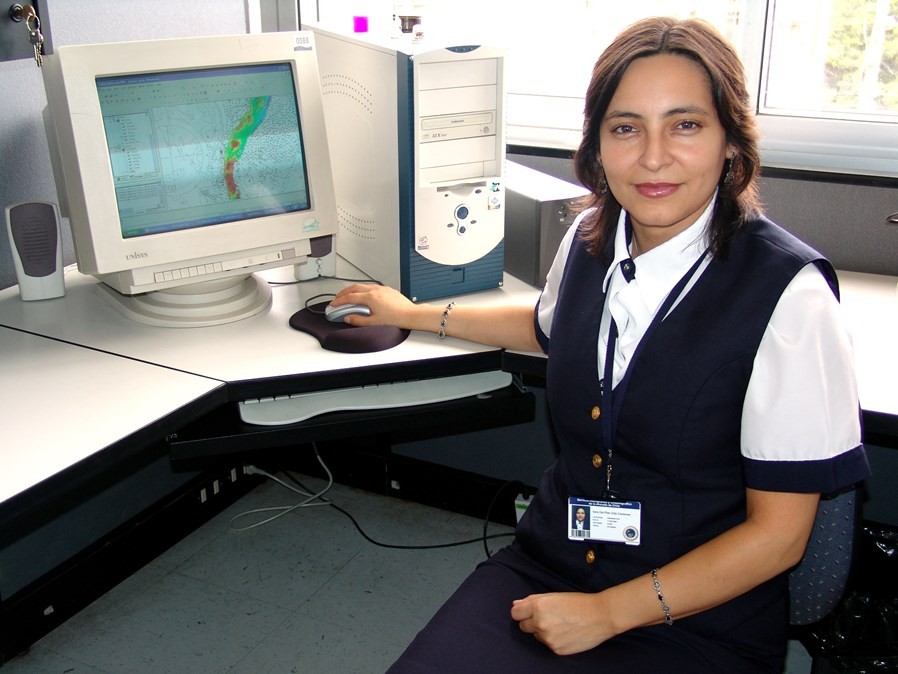
It was in 2007 that the Navy started training both male and female officers at the Naval Academy and enlisted personnel at the Navy’s Enlisted School. In 2007, SHOA ’s Instruction Centre received its first female student, 1st Lieutenant Jeanette Sheets from the United States Navy, who graduated two years later as an hydrographic and oceanographic engineer having successfully completed the course. Lt Sheets was followed by Lieutenant Milagro Sánchez from the National Aeronaval Service of the Republic of Panama (SENAN), a member of the 2013–2014 class.
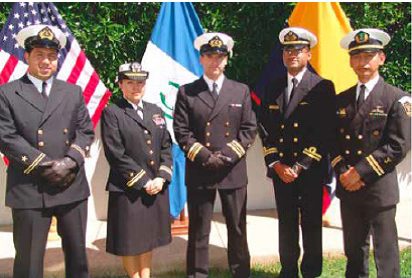
At the end of 2013, the then enlisted sailor Ms. Nicole Urrea became the first woman to obtain the Mechanical Hydrographic and Oceanographic (Mc. Hd. Oc.) specialism having graduated from the SHOA Instruction Center. Ms. Urrea was selected, amongst many Chilean women, by the Association of Women Entrepreneurs and the newspaper “El Mercurio”, to join the “Hundred Women Leaders 2013 Group”. This recognition is awarded to women who have uniquely participated in working specialist areas of interest in the country. This recognition highlights the determination of the Chilean Navy to incorporate women in all areas of its activities.
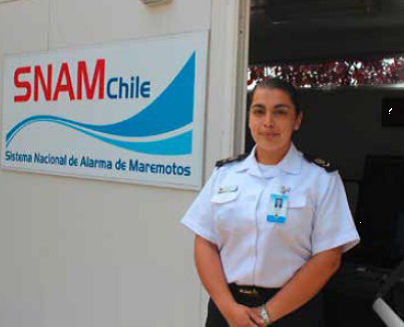
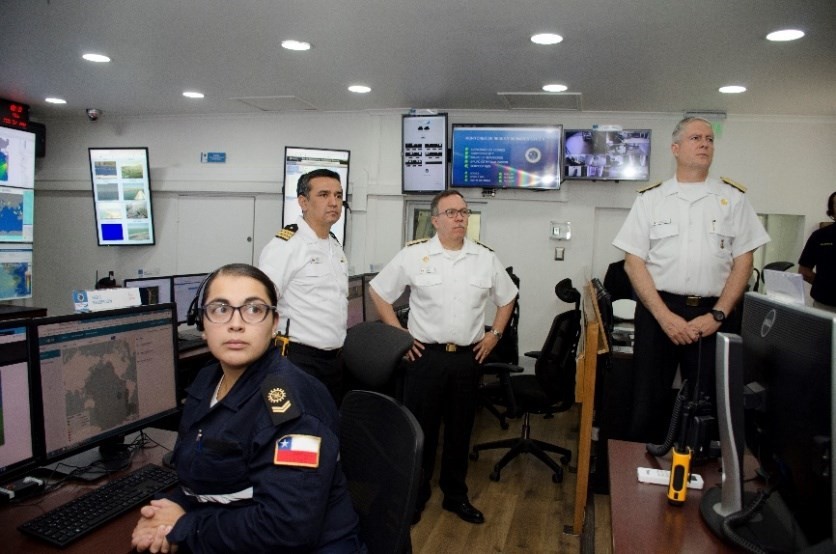
In 2014, SHOA’s Instruction Center welcomed in its classrooms Lt JG Daniela Machuca who in 2015, having successfully completed the two-year Category “A” program, became the first Chilean female officer to obtain the title of “Naval Engineer in Hydrography and Oceanography”. She is currently serving as executive officer of PSH “Cabrales”, one of the vessels fitted with the specialist equipment required for the conduct of hydrographic surveys. Subsequently, two further female hydrographic officers have graduated, and are currently serving in charge of hydrographic tasks on board other vessels, demonstrating both leadership and professionalism in their assigned roles.
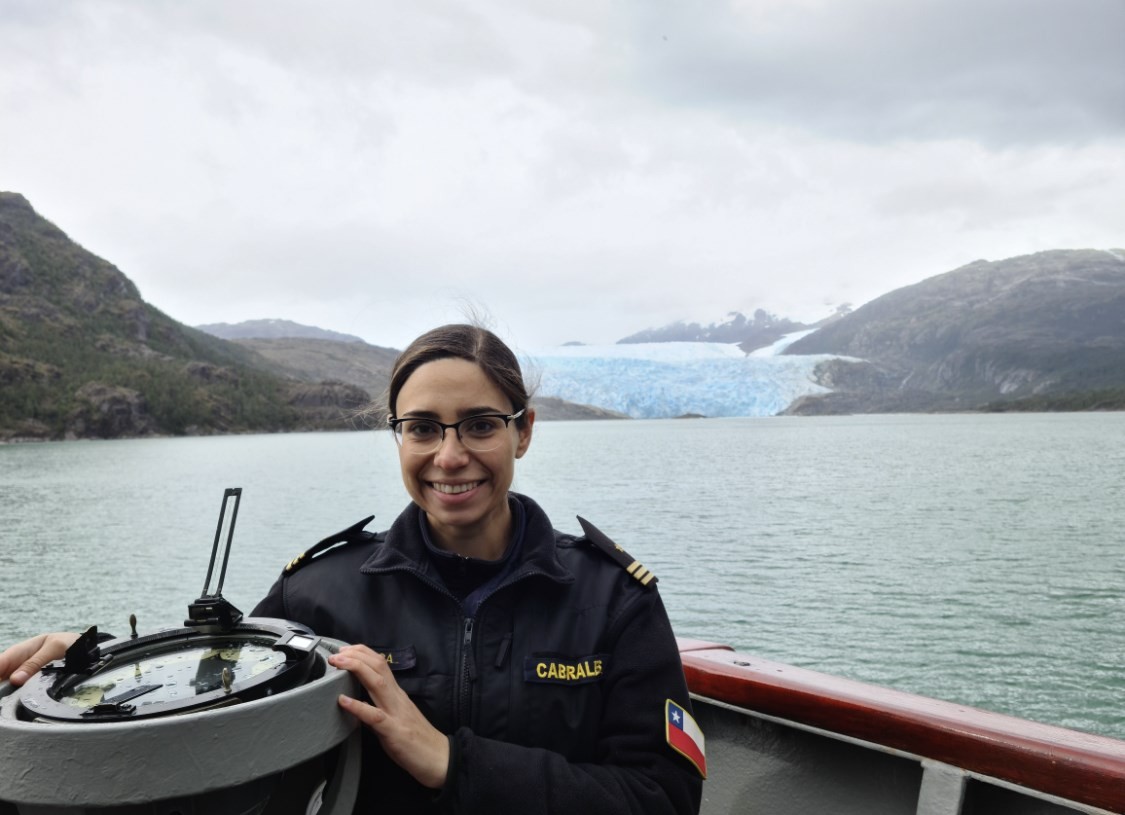
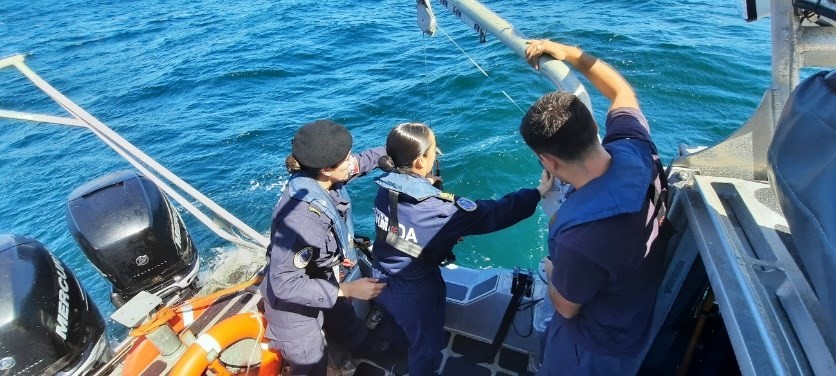
Up until 2020, SHOA‘s Instruction Center has graduated 12 female enlisted personnel. They are all integrated into either the hydrographic or the oceanographic departments and actively participate in teams conducting hydrographic and oceanographic surveys. They are fully integrated with their male colleagues in both data gathering and data processing activities.
4. INTERNATIONAL VISION
Sustainable Development Goal No. 5 of the United Nations 2030 Agenda is to “Achieve gender equality and empower all women and girls”. Within this Goal, the following target is highlighted:
Target 5.5: “Ensure the full and effective participation of women and equal opportunities for leadership at all decision-making levels in political, economic and public life”.
This target constitutes the basis identified by the IHO to encourage Member States to take action and present initiatives that allow women to participate equitably in the field of hydrography, and to assume leadership roles within the hydrographic community.
In effect, the 2nd Session of the IHO Assembly (A-2) approved the adoption of a new working point entitled “The Empowerment of Women in Hydrography” (EWH) in the IHO Capacity Building Sub-Committee’s Work Program. The IHO Secretariat was entrusted with the task of obtaining secure funding through the allocation of available IHO budgetary resources and the negotiation of appropriate cooperation arrangements with interested Member States.
In line with this approach, Canada and the IHO have signed an agreement that guarantees funds for the next three years, provides a project work plan for the period 2021–2024, and describes a series of activities and initiatives, all of which will allow the participation of more women, equitably, in the field of hydrography and their advance to leadership roles within the hydrographic community. This initiative is in the process of being implemented and will certainly contribute to those Member States that require support to integrate women into the activity of hydrographic services.
5. CONCLUSION
The evolution of female participation that society has followed is similar to that of both the Chilean Navy in general and SHOA in particular. The above account evidences the successful inclusion of women in hydrography.
In the case of the SHOA, women are fully integrated into both hydrographic, nautical cartographic, and oceanographic activities, a fact that we wished to share with the reader of this article. Women participate fully in all the main technical and scientific disciplines of SHOA´s area of competence.
In brief, SHOA is in line with the general vision of the United Nations Decade of Ocean Sciences for Sustainable Development 2021–2030 that invites to: “Encourage more inclusive and participatory approaches in design and implementation…” and “promote knowledge and information that are shared more equitably throughout the world…”, faithfully complying with the integration of women, allowing them, depending on their abilities and competences, to develop professional activities and assuming positions of high responsibility at SHOA.
